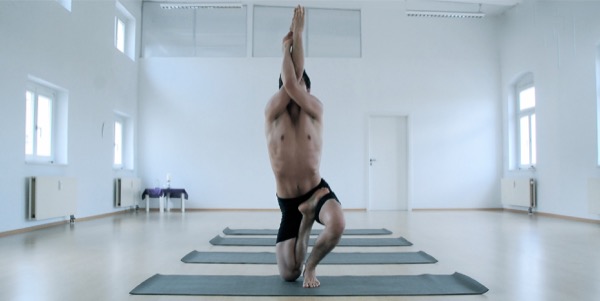People who do Yoga regularly know how it makes them feel more confident and calm. The body feels better, vibrant and healthy! And that feeling usually stays for the rest of the day! Many practitioners love those effects of their Yoga practice, yet it is hard to really put into words what and why that happens with us.
I am always amazed how my Ashtanga Vinyasa Yoga practice, even if it is short, positively effects my whole day. After practice the heart is open, the spine is long and the mind is clear, ready to deal with whatever might come up during the day.
And after working on physical challenges in my Yoga practice and learning to breathe through them, I am firmly grounded and much less likely to (over-)react to anything that might otherwise upset me.
But what is behind those effects of a consistent Yoga practice. Is it just a subjective feeling, is it the effect of deep breathing, the stretching and strenghtening of the body, or do the promising names of the poses such as warrior pose, heron pose, fierce pose make one feel so great afterwards?
Well, it is probably a mix of many factors that influence our well-being. But recently I learned about a Harvard study (read it here) that made some interesting findings about the interdependencies of how we pose with our bodies, hormone levels and the level of stress and confidence. The study shows, how our body language has a significant influence on your immediate hormone levels and your levels of stress and confidence.
They classified different body positions as high power or low power poses: High power meant that the heart area is open, limbs extended, the body active and stable, yet not too tensed (e.g. the typical victory pose). Low power poses involved closing and collapsing the body inward, as for protection.
Here is how the study was done:
- They took a saliva sample from each subject and measured their testosterone and cortisol levels.
- Then, the subject posed in either two high power poses or two low power poses for one minute each.
- Afterwards, a second sample of saliva was taken from each subject, they checked again for testosterone and cortisol and compared them to the prior sample.
- The results were amazing; just through two minutes of changed body language the hormone levels in the subjects had changed significantly: High power poses increased testosterone by 20 percent and decreased cortisol levels by 25 percent (low power poses decreased testosterone by 10 percent and increased cortisol by 15 percent).
Now what do those hormone level changes mean: Higher testosterone comes along with increased feelings of confidence and readiness to take risks while lower levels of cortisol decrease anxiety and improve your ability to deal with stress as well as your resistance to diseases.
In my opinion that may explain (on a hormonal level), why doing yoga on a daily basis leaves you more relaxed, confident, stable, and able to deal with the stresses of daily life. For me, most if not all Yoga poses are high power poses: In each one, the heart should be open, the whole body stable, active, yet relaxed, the breathing calm, deep and „victorious, the gaze (Dristi) strong, focused and confident. And in the Ashtanga Practice you usually hold about 30 to 40 poses/asanas for 5 long breaths. So you end up with 90 minutes of continuous high power asanas! If you can already detect the difference in hormone levels after two poses and two minutes, I would love to see the results after a whole Ashtanga practice.
What I additionally found interesting was
- that high and low power poses were both rated by the subjects in the study as equally considering comfort, painfulness and difficulty – so don’t think the postures or asanas should be difficult or especially hard to do! Allow yourself to feel some ease in the asanas.
- that the participants were put into the pose without indicating whether the pose was high power or low power. Therefore I assume the effect in our Yoga practice is even more significant since we can consciously do the asanas with awareness and intention, knowing about the positive effects.
- that in another study, they also tested people to stand in high or low power poses for two minutes just prior to a job interview. The interviewers (who did not see the posing!) had to evaluate the performance in those interviews and significantly favored the high power posers over the low power posers. So also your environment notices the effect, which might explain how friends notice when you start doing Yoga on a regular basis!
So the next time you feel stressed out, just hold your favorite Yoga-high-power-asana and then face whatever challenge is in front of you!
Keep up your practice and enjoy the results! :)
If you want to see the TED-talk about body language where the study mentioned above is presented, find it here.
Examples of high power poses in the study here.
This arcticle was originally published on my blog www.greenashtangi.wordpress.com

